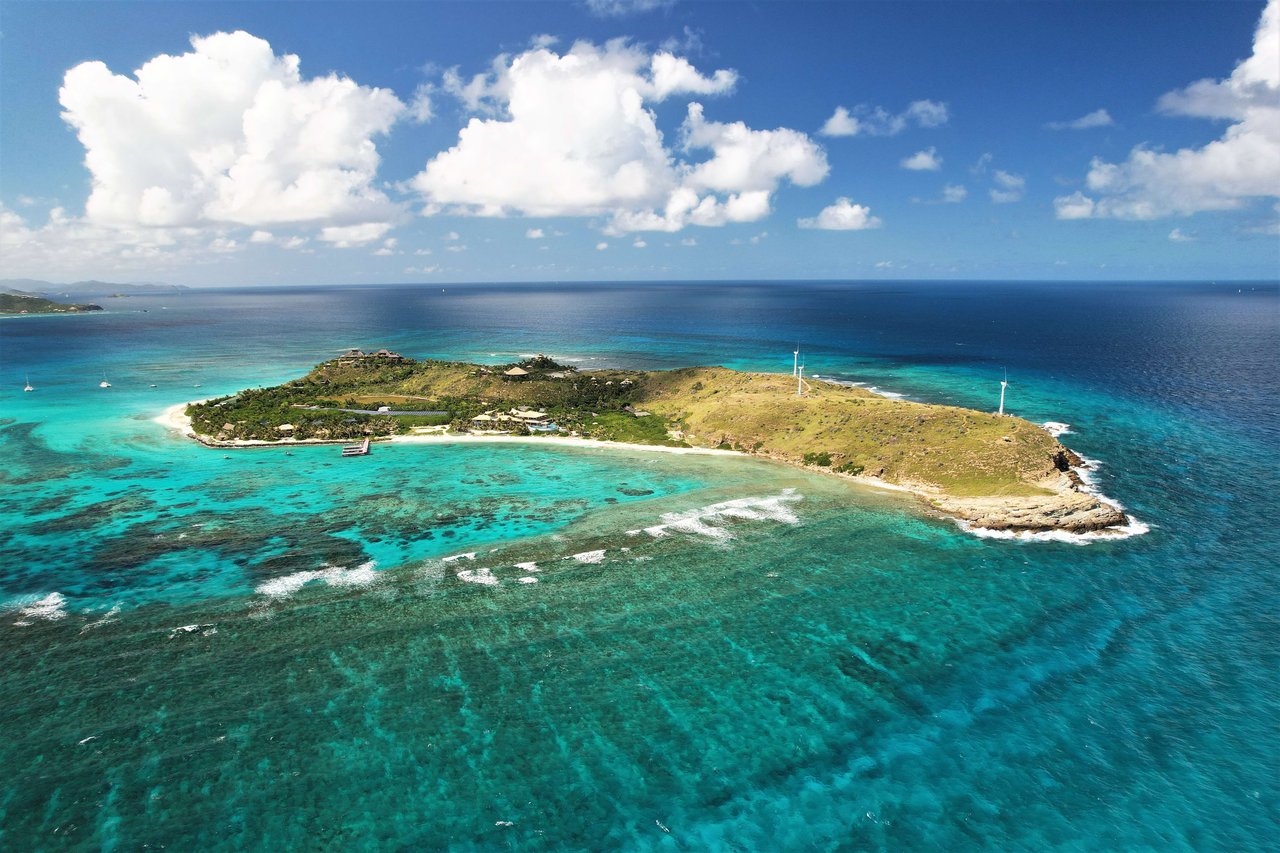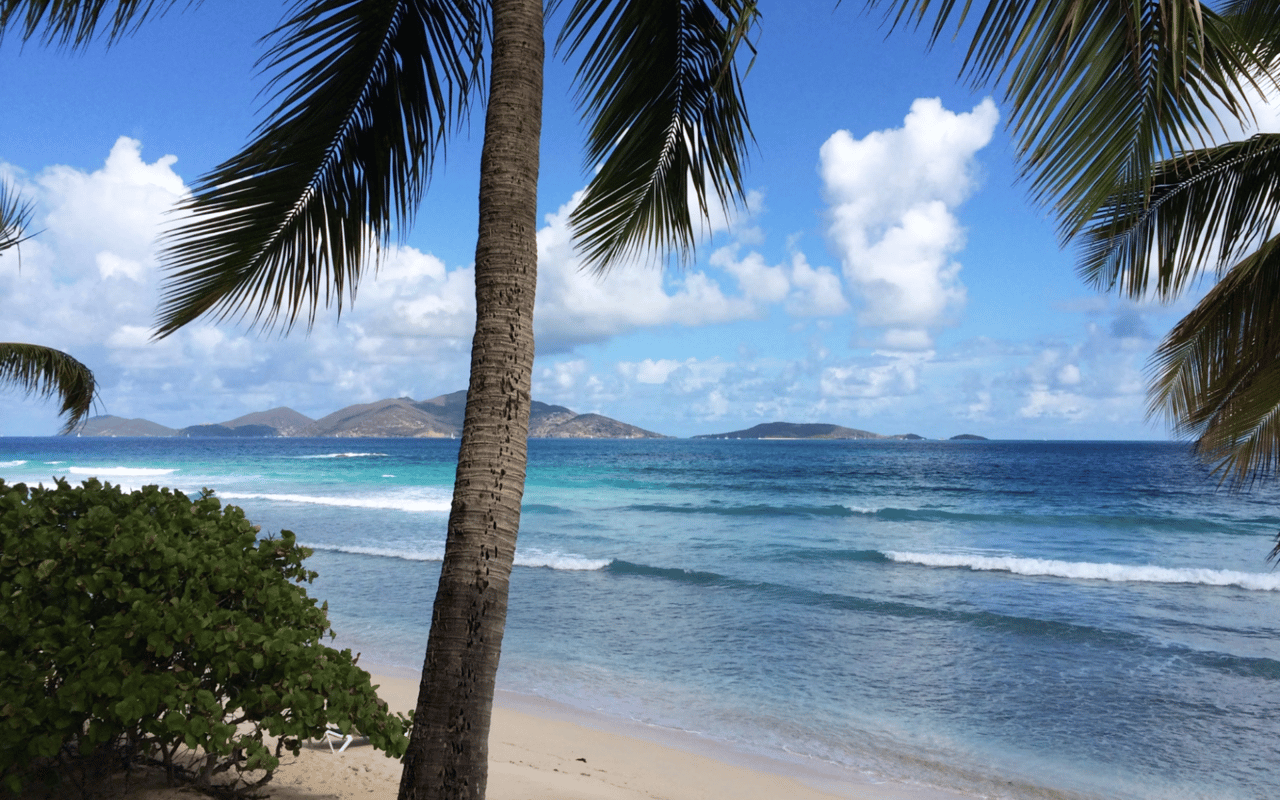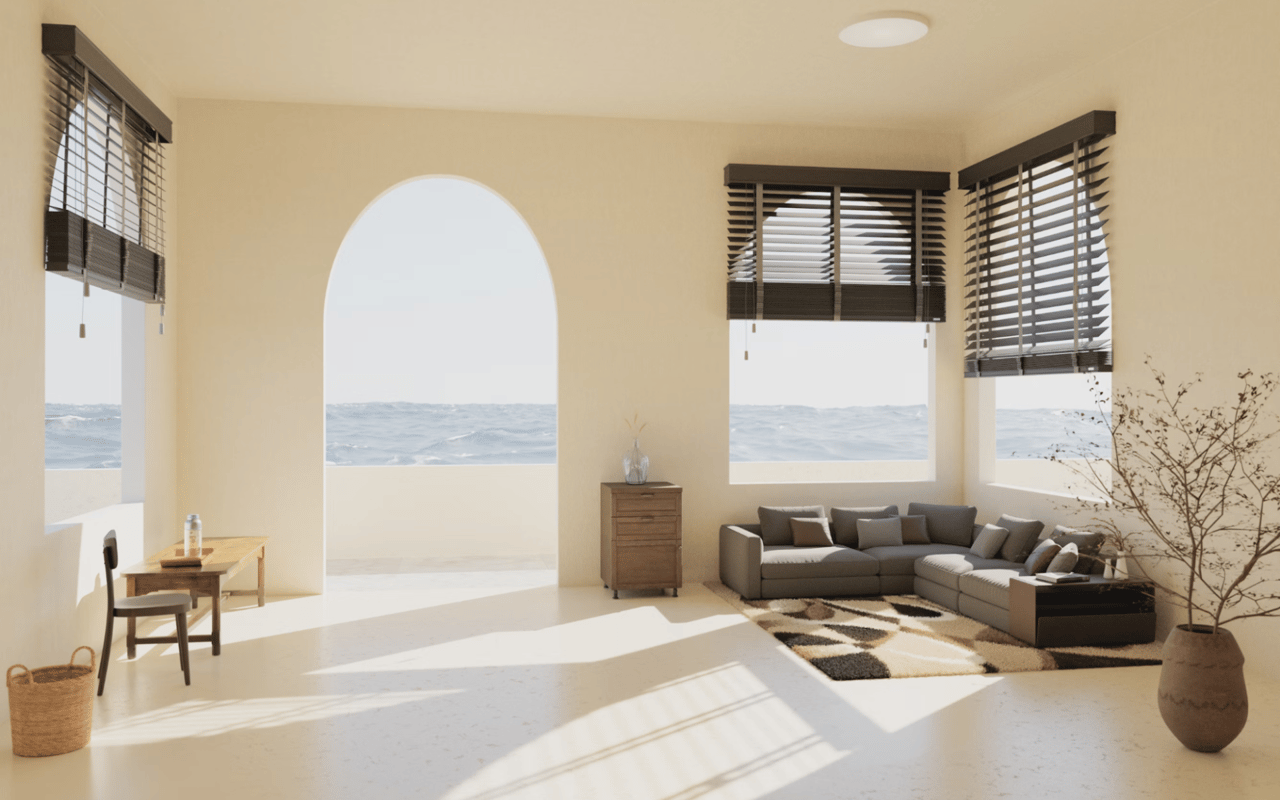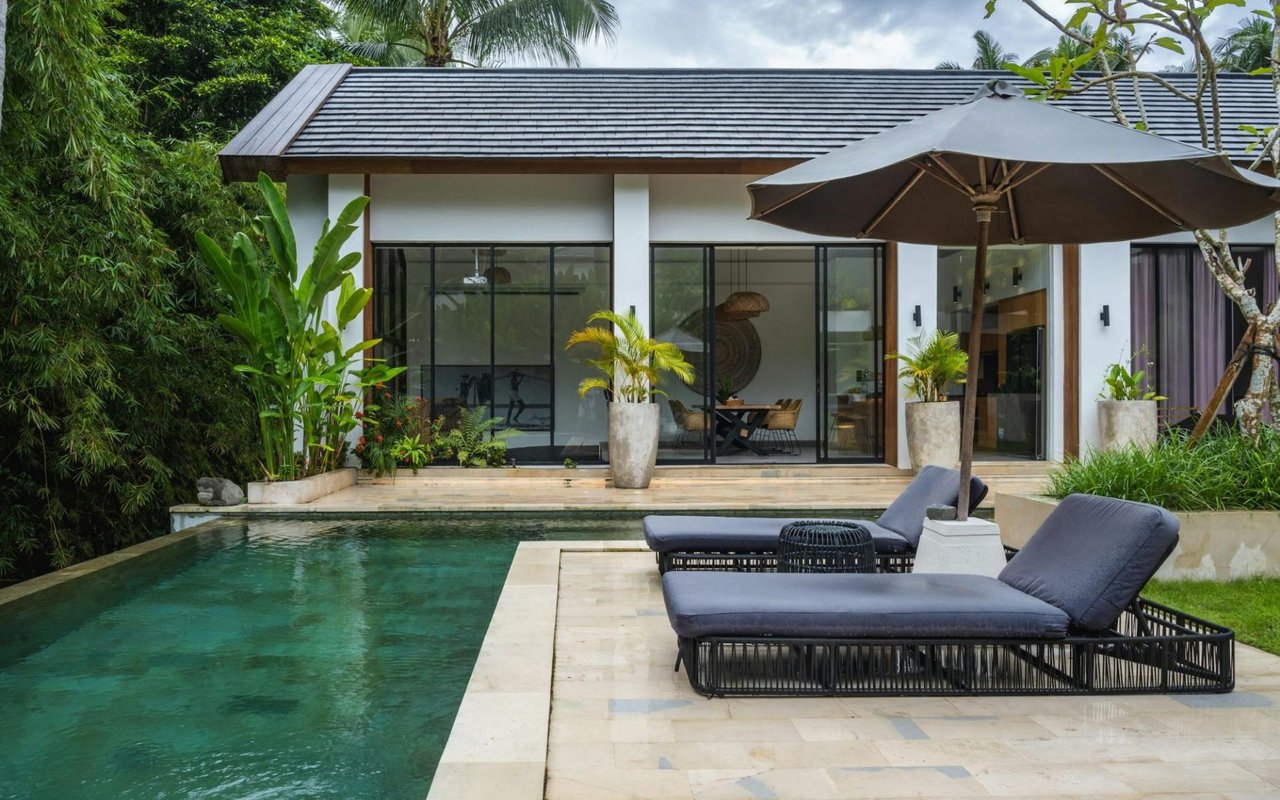As we move through the last quarter of 2019, we can reflect on a year of contrasts. At the macro level, it seems that much of the world has lost its direction. The unresolved issue of Brexit, trade wars between the US and China, proxy wars in the Middle East and the rising crisis of climate change. These are all significant events which are defining how the rest of the year will play out as we move towards the presidential elections in 2020, an eventual Brexit solution and a world economy which has slowed down after several years of growth. Within the BVI, after an active hurricane season where several close misses reminded all of the fragility of the islands in the face of a major hurricane, the rebuilding of the BVI continues and progress is made monthly. The reopening of part of the High School in September and Little Dix Bay Resort towards the end of the year, are both significant milestones that demonstrate the extent of the recovery to date and return to “normality”.
BVI – Economy and Relationship with UK
In September 2016, when writing the 2017 edition of the BVI Business Guide real estate review, we outlined some of the Brexit choices for the UK, from Hard Brexit to a Continental Partnership where controlled mobility of labour and access to the single market would allow the UK a voice, if not a vote, in Europe. It seems incredible that three years later, this same discussion is still taking place, albeit with the UK Parliament tearing itself apart, as it tries to define the terms on which it will exit Europe. With Boris Johnson as Prime Minister (who saw that three years ago?), and the Supreme Court overruling his extended proroguing of Parliament, the entire constitutional basis of the United Kingdom has been called into question. Brexit remains an enigma as we move into November, a battle of wills between Europe and the UK, although the approval by the EU of the revised UK Brexit proposal has moved the process one step closer. Despite that, conflict in the UK Parliament over the passing of Brexit legislation has led to further stalemate which may finally be resolved in the December general election.
Through all of this, the BVI has been managing its relationship with the UK, in part due to the recovery that has been necessary post Irma (Hurricane Irma – 6 September 2017) but also in the face of continued pressure being placed on the UK Overseas Territories to ensure that international financial centres comply with increasingly stringent compliance measures. While the recovery has been continuing in the private sector, the BVI Government has approached the UK with a view to setting out a structure to secure the UK’s offer of a loan guarantee and a revised plan for the recovery. Key to this is the establishment of a new Borrowing and Steering Committee which will be the body responsible for securing loans under the UK’s guarantee including negotiating terms for any borrowing agreement within internationally adopted debt sustainability indicators. The BVI Government is also revising the Recovery and Development Plan for the period 2019 to 2023 which is to be tabled in the House of Assembly.
The introduction of a public register as a result of the UK’s Sanctions and Anti-Money Laundering Act passed in May 2019 will require the BVI to introduce a public registry for companies registered in the BVI, although the requirement will currently only come into play in 2023. Prior to this, the BVI passed the Economic Substance (Companies and Limited Partnerships) Act, 2018 in response to concerns raised by the EU Code of Conduct Group for Business Taxation and the OECD about the economic substance of companies in jurisdictions like the BVI with zero, or near to zero, corporation tax. This law requires certain types of qualifying companies to have economic substance, or a presence, within the jurisdiction.
While the impacts of both pieces of legislation have yet to be felt within the BVI, company incorporations, which are the backbone of the financial services industry, remain fragile. After a brief rally in 2018, company incorporations fell in 2019 as shown in Chart 1.
With the Virgin Islands Party taking control of the government in the 25 February 2019 election, there has been a new approach to the relationship with the UK which will be addressed in an upcoming constitutional review in 2020. One proposal being considered is a “free association” whereby there is a political relationship with the UK but without restrictions on how the BVI governs itself. While the continued Brexit negotiations make news in the BVI, the UK is seeking to mitigate the eventual impacts of Brexit on the UK Overseas Territories. For the BVI, the hopes are that the impacts will be minimal for a territory which looks to the Americas for much of its inward investment, whether through tourist arrivals or business investment. Concerns over travel restrictions and rights to UK citizenship are mainly unaffected as BV Islanders with UK passports will continue to have 90-day visa-free access to the Schengen area in any 180 days nor will eligibility criteria for British passports change as a result of Brexit. The BVI will, however, lose access to the many sources of financial support which are available through EU grants, although the UK has indicated that it will continue with any EU funding that may be in place, but otherwise lost, in a post Brexit environment.
Looking westward, the strength of the US economy will always play a significant role in defining the Caribbean, mainly through tourism but also an investment in real estate and industry. While the US economy has enjoyed its longest growth cycle, now in its eleventh year, there are now questions over how long this can continue before a correction occurs. The Federal Reserve cut interest rates three times in 2019, the first cuts since 2008 following concerns about a slow-down in growth, using monetary policy to keep the economy on track. While the American economy is defying global trends, with lower unemployment rates and higher consumer spending, it is trade wars, primarily with China, that have dampened business investment and slowed down manufacturing production in the US. The Federal Reserve is prepared to cut rates further to avoid a recession should signs of economic slow-down continue, but there are concerns that the fifteen-month trade war will start to impact other parts of the US economy outside of the manufacturing sector.
A slow down or recession in the US economy will have an impact on the Caribbean as well as the world economy, at a time when many islands are recovering from the impacts of category five hurricanes. Chart 2 shows the impact on tourism in the BVI following Hurricane Irma in September 2017 and the recovery since.
While cruise ship calls have rebounded this past year once the various cruise lines decided Tortola had recovered sufficiently to restart their visits, the over-night tourism industry has taken longer to recover. The charter industry was quick to respond post-Irma, with boats being replaced in fleets within weeks and months, and the industry is almost back to pre-Irma capacity both in terms of boats available and bookings. The government needs to take heed of the issues being faced by the yachting industry and ensure that this sector is supported while it continues to rebuild.
Resort Sector Progress Post Irma
The slower recovery of overnight tourist arrivals is due to the length of time it has taken for the hotel sector to recover from Irma combined with continued accessibility issues to the BVI from all destinations. However, two years after Irma and there are plenty of encouraging signs that the resort sector in the BVI is recovering. Throughout the BVI, home and business owners have been rebuilding, taking the opportunity to strengthen facilities, expand where it is warranted and replace old with new.
The news that Little Dix Bay Resort, a flagship resort in the BVI, is opening again for business this coming high season is welcome indeed and a much-needed boost to the Virgin Gorda economy. Having first closed in May 2016 for renovations, the resort will once again attract international, wealthy guests whose interests will extend beyond the resort.
Elsewhere on Virgin Gorda, Oil Nut Bay opened the marina village in April 2019 featuring Nova Restaurant with overwater hammocks, pool, boutique and market. Situated in Deep Bay, the restaurant and facilities are open to the public and provide a welcome new venue for visitors and residents alike. Oil Nut Bay continues to expand the real estate offerings with several new homesites available for development post-Irma. There are now a total of 26 villas and suites completed on the site with a further 8 private villas under construction.
Construction work at Moskito Island has continued and a number of villas on the island are now scheduled for completion this year and in early 2020. This private island development has set new standards in the Caribbean with respect to inward investment by home-owners in a single project.
In North Sound, work continues on the renovation of Saba Rock, a small island between Prickly Pear and Bitter End Yacht Club. Scheduled to open in mid-2020, Saba Rock will breathe life back into the eastern part of North Sound which has otherwise remained quiet post-Irma following the closure of Bitter End Yacht Club.
The iconic Bitter End Yacht Club will make a comeback in the first half of 2020 when it reopens its marina, waterfront and nautical village. The marina complex will include a two-story, open-air building featuring a club lounge with expansive views of North Sound. Adjacent to the marina will be the Bitter End Marina Village including the return of Bitter End’s world-renowned Club Fleet, a beachfront restaurant and bar, private event space, the Bitter End Market and the Reeftique boutique with branded goods. On the heels of the nautical village rebuild, the 64-acre property redevelopment will evolve to include a variety of unique accommodations and hospitality amenities. The return of Bitter End Yacht Club will provide a much-needed boost to the tourism options in North Sound.
Nail Bay Resort has opened the Sugar Cane Restaurant, a fine dining restaurant which now takes in the panoramic views west to Tortola, and is developing tennis and squash facilities at the resort as well. In the Valley, Guavaberry Spring Bay has continued its renovation with most of the resort villas now rebuilt while Virgin Gorda Yacht Harbour is completing the renovation of one of the original retail blocks with retail units ready for occupation by the end of the year.
Nanny Cay Resort and Marina’s new marina basin is now well established and the owners have embarked on a replacement of the original floating docks in the old marina which were swept away in Irma. Once complete, the two marinas will have a combined 325 berths with the docks in the old marina basin matching the quality of those in the new marina basin which was completed just before Irma. At the same time, Nanny Cay is upgrading the existing hotel rooms and adding an additional eighteen new rooms to the hotel room inventory. The combined investment for both the marina and the hotel is in excess of $10.0M.
Following the acquisition of Long Bay Beach Resort in 2018, the new owners have been preparing development plans and are now in the final planning stages prior to commencing construction in the first quarter of 2020. The first phase of development will include the construction and renovation of forty-eight new and existing hotel rooms, the renovation of the existing beach restaurant and the construction of a beach bar and pool.
On Beef Island, hotelier and developer Doug Riegels acquired De Loose Mongoose, a well-known beach bar and restaurant situated on Trellis Bay. With plans to extend the dock and improve the dining and bar facility, the renovated Loose Mongoose will also provide a base within Trellis Bay for the many outer island resort operators who need to transit through Trellis Bay to access the airport. Riegels already operates Anegada Beach Club, a back to nature establishment on the north shore of Anegada. Popular with visitors and residents alike, the resort was upgraded following Irma making the glamping structures adjacent to the beach more permanent whilst retaining the rustic ambience favoured by guests.
While Cooper Island Beach Club remained structurally intact following Irma, the resort took the opportunity to upgrade older structures including replacing the roof on the power-control-room with reinforced concrete which suffered damage during Irma with resultant impact on the inverters, batteries and generators that powered the resort. Eighty-five percent of the resort’s energy is generated through the photovoltaic system and Cooper Island Beach Club is an industry leader in renewable energy and green technology. The restaurant uses local produce where possible, supporting BVI industry and reducing imports. Glass is crushed on-site with the sand by-product used in landscaping and aggregate while an on-site micro-brewery reduces the need to import beers and reduces waste.
Scrub Island is another island resort that withstood the ravages of Irma well; some roof repairs and general sprucing up to freshen up the resort was all that was necessary to ensure the resort could open just six months after the hurricane, the first of the larger resorts to do so while the marina was operational by the end of 2017. Scrub Island is introducing a private plane charter in November 2019 for groups of up to nine guests connecting from San Juan. Having won a Wine Spectator Award in 2019, the resort has rebranded its two dining experiences, introducing Donovan’s Reef and Cardamom & Co to the guest experience.
With progress and development being made in the resort sector, and an increase in the number of overnight visitors, there is a knock-on effect to the remainder of the economy as more tourist dollars are spent within the BVI. Evidence of this is the number of restaurants that have opened this year, either after repairs or as new operations. On Tortola, Seven at the Pier Restaurant has opened its doors at Tortola Pier Park while Sweet & Savoury sushi restaurant commenced operations in a delightful garden location which was formerly a plant nursery in central Road Town. Old favourite Le Cabanon has relocated to the Royal BVI Yacht Club and Bamboushay Lounge has reopened with a new layout on Waterfront Drive. Further afield, in Trellis Bay Jeremy’s Kitchen has finally reopened, joining Marche Bar and Restaurant in servicing the yachts and tourist business on Beef Island.
Access to the BVI
Central to the development of the tourism sector in the BVI is the ability to access the Territory in a timely manner, whether from the Americas or Europe. While the debate over the possible expansion of the airport continues, Irma exposed the BVI to the fragility of the seaports, particularly the West End Ferry Terminal in Sopers Hole which was closed to ferry traffic from St Thomas until August 2019 and the Road Town ferry terminal which was closed until May 2018.
Chart 3 indicates the importance of the seaports to overnight arrivals in the BVI and the impact of Irma on those arrivals in the immediate aftermath of the hurricane. At its peak, approximately 340,000 overnight tourists arrived into the BVI via seaports compared to 80,000 overnight tourists arriving by air. Overnight arrivals via seaports fell to just over 100,000 passengers before increasing through 2018 and 2019 as the recovery in the BVI gathered pace. It is noticeable that overnight arrivals by air did not increase to compensate for the fall in those arriving by sea.
While the importance of the seaports in the BVI as a point of entry is evident from Chart 3, the historic passenger traffic through the West End ferry terminal in Sopers Hole demonstrated the importance of the sea link between West End and the international airport in St Thomas as shown in Chart 4. Although tourists could access the BVI from St Thomas via ferry direct to Road Town, the destruction of the West End ferry terminal still negatively impacted tourist arrivals to the BVI. The reopening of the West End ferry terminal in August 2019 to international ferry arrivals from St Thomas will again provide tourists with a convenient link into the BVI via direct flights through St Thomas. The Tourist Board have also announced that that they are tendering for a late service ferry from St Thomas to the BVI to service the flights that arrive in St Thomas too late to link with the existing ferry schedule.
The BVI Tourist Board and Government are continually looking to improve access to the BVI and two recent announcements should help improve airlift this high season. The Premier recently announced that discussions for a seaplane service between Puerto Rico and the BVI were ongoing. Although the details have yet to be published, it is understood that the service would operate initially from Puerto Rico before moving to Tortola and that the first flights should take place before the end of the year. InterCaribbean has also announced that they will commence flights direct from San Juan to Virgin Gorda, commencing February 2020. This will bring much-needed airlift to Virgin Gorda at a time when significantly more over-night accommodation has become available on the island.
Two years into the recovery and the BVI has come a long way both in terms of rebuilding and also with new development within the resort sector. The Government is paving the way to a new relationship with the UK and the forthcoming constitutional review will define this for the next ten years or more. There is still work to be completed to the Territory’s infrastructure, and not all the cracks are as a result of Irma. Lack of adequate investment over the years in many of the public service sectors needs to be addressed and resolving the UK loan guarantee to access funding will be a key to this. As we move towards the end of the hurricane season, the impacts of Hurricane Dorian on the Bahamas are a reminder of the vulnerability of the region to natural disasters. The RDA’s message that we need to rebuild “stronger, smarter, greener, better” has never been more apt.
BVI Real Estate Market Overview
Reviewing the data for all homes sales in the BVI since September 2017, the number of sales per quarter was significant (for the BVI) during 2018 and the first quarter of 2019, since when the number of sales has fallen. The increase in the number of sales was due to the sale of damaged homes post-Irma, with vendors taking the decision to exit the market, rather than to try and rebuild. The second quarter of 2019 saw a substantial fall in the number of sales followed by an increase in the third quarter as shown in Chart 5.
The post-Irma BVI home sales market:
There have been 91 house sales since September 2017
63% of sales have been below $500,000
89% of sales have been below $1.0M
There has been one sale above $3.0M (at Oil Nut Bay)
74% of the sales have been to Belongers
93% of sales to Belongers are under $1.0M
There have been 24 sales to Non-Belongers
The fluctuating number of sales per quarter is partly due to the requirement for Non-Belongers to obtain government consent to sell, even when in contract with a Belonger with the closing date dependent on the time for the government to process applications which can take months rather than weeks. The fall in the number of sales in Q2 and Q3 is probably indicative of a tail-off in the post-Irma cycle of selling damaged homes. This has been an active market as witnessed by the number of home sales in each quarter with the majority of these sales to BV Islanders and Belongers.
The median sale price has fallen each quarter as the market has been dominated by the number of sales below $500,000 reflecting the damaged condition of many of the homes. However, the third quarter of 2019 has seen an increase in the median sale value as five of the ten sales in that quarter were between $500,000 to $1.0M. As the market for damaged homes begins to tail off, the residential market should begin to return to more normal conditions dominated by the sale of undamaged or repaired properties.
Agents are reporting that enquiries from overseas investors have been picking up with potential investors more likely to commit to a purchase as the recovery process in the BVI has continued. However, there may be an initial slow-down in recorded sales while the market for damaged property tails off and until sales under normal market conditions start to gather pace. This high season will provide an indication of how the real estate market is performing and whether the number of sales to overseas investors will start to increase, particularly in the higher price bands where there has been little activity.
Chart 6 shows the post-Irma house sales by price range. Of the 91 homes that have sold between September 2017 and September 2019, 57 have been priced under $500,000 representing 63% of the market. There have been 24 sales between $500,000 to $1.0M representing 26% of the market. There have been just 10 sales in excess of $1.0M representing just 11% of the total villas sold. The third quarter of 2019 was the first quarter where the number of sales over $500,000 equalled the number of sales below $500,000.
Chart 7 outlines house sales to Belongers and Non-Belongers with the former dominating the market with 74% of sales representing 67 house purchases. Local investors kept the residential market active following the 2008/09 economic crisis when overseas investors all but disappeared. Post Irma, Belongers have seized the opportunity to acquire damaged homes, the majority of which would have been owned by Non-Belongers. This market cycle, therefore, represents an important return of real estate back into local ownership.
Chart 8 divides the sales between Tortola, Virgin Gorda and the outer islands (predominantly Great Camanoe, Jost Van Dyke and Anegada). A total of 71 sales were on Tortola representing 78% of the market with 18 sales on Virgin Gorda, or 20% of the market. There were just two outer island sales. The dominance of Tortola in the market is a reflection of the overall larger home inventory rather than a lack of sales on Virgin Gorda.
As can be expected, the differential between asking and selling price reduced post-Irma. Of the five sales that closed post-Irma, two of the sales were sold at the asking price and three of the sales were sold within a year of going on the market. Prior to Irma, the differential between asking price and sale price was higher and the average time on the market was considerably longer. While there have been fewer sales to analyze post-Irma, the indications are that vendors have been more aware of the pricing necessary to achieve a sale combined with a more active market created by the number of damaged properties that have sold.
Looking closer at high-end villa sales over $1.0M from 2015 to June 2019, Table 1 sets out the number of villa sales each year showing the average listing price compared to the average sale price and the average number of years the properties have been on the market. The table excludes a number of villa sales which were sold privately without going to the market, a practice more prevalent post-Irma with the sale of damaged property.
For the investor considering the BVI as a potential destination for a home purchase or larger investment, there are always opportunities available. While the majority of the damaged houses have now been sold, there are still a number of larger properties, at higher price points, that received damaged where owners wish to exit rather than repair. Several of these are now attracting interest as owners’ price expectations start to match the market. As part of the return to more normal market conditions, there are also fully repaired properties back on the market at pricing which has not been increased to reflect the additional works that have been completed during a renovation.
Table 1 : Analysis of Villa Sales > $1.0m 2015-2019 (September)
Data includes asset and known share transactions compiled by Smiths Gore.
Table 2 compares the same data set between Tortola and Virgin Gorda, divided between pre and post-Irma villa sales. Asking prices and sale values are higher on Virgin Gorda compared to Tortola, reflecting the historical difference between the two markets with the Virgin Gorda market dominated by high-end villa development catering to the short-term villa rental market. Post Irma, the differential between asking price and the eventual sale price has significantly reduced on each island. The substantial difference post-Irma between average asking price and sale price on Virgin Gorda compared to Tortola reflects one villa sale at Oil Nut Bay which substantially increased the average asking price and sale price on Virgin Gorda. With very little data to analyze, a single sale can have a significant impact on the data.
Table 2 : Analysis of Villa Sales On Tortola & Virgin Gorda > $1.0m 2015-2019 (September)
Data includes asset and known share transactions compiled by Smiths Gore.
In reviewing all property transactions post-Irma, the number of land sales that stands out. Chart 9 shows the total volume ($M) and the number of land sales ($M) between October 2017 and September 2019. In total, there have been 164 land sales comprising approximately 84 acres of land and representing almost $38M in transactional value. The average land sale comprises half an acre, with the majority of land sales in small sub-divisions. Tortola accounts for 73% of the number of land sales and 66% of the acreage sold.
As can be seen in Chart 10, the land market is dominated by Belongers who account for 91% of all transactions. The land transactions combined with the number of houses acquired by Belongers post-Irma indicates that there is a healthy local real estate market.
As we approach the end of 2019, the indications are that the real estate market in the British Virgin Islands is emerging from the post-Irma cycle of damaged property sales to one which will reflect more normal market conditions, with an inventory dominated by undamaged or repaired houses. The signs are encouraging that interest from overseas investors will continue to build as the recovery gathers pace. The reopening of Little Dix Bay resort on Virgin Gorda will certainly help businesses on the island this high season and increase the number of potential investors looking at real estate within the BVI.
What has emerged from this post-Irma cycle is the strength of the Belonger market, who have invested heavily in damaged homes and land. To put this into perspective, the combined transactional value by Belongers in residential land and homes is $46.41M or 49% of all sales since Irma. During the same period, sales of land and houses at Oil Nut Bay and Moskito Island account for a further $32.90M or 35% of total sales while the sales of land and house sales in all other areas of the BVI to Non-Belongers was $15.52M or 16% of total sales.
BVI Real Estate Investment Opportunities
For the investor considering the BVI as a potential destination for a home purchase or larger investment, there are always opportunities available. While the majority of the damaged houses have now been sold, there are still a number of larger properties, at higher price points, that received damaged where owners wish to exit rather than repair. Several of these are now attracting interest as owners’ price expectations start to match the market. As part of the return to more normal market conditions, there are also fully repaired properties back on the market at pricing which has not been increased to reflect the additional works that have been completed during a renovation.
The BVI real estate market has demonstrated resiliency in the face of the challenges imposed by Irma and has created opportunities for BV Islanders and Belongers to take advantage of mainly foreign investors seeking to exit their investment after their properties were damaged. This repatriation of land and property back into local ownership has followed a trend that emerged in the post-2008 economic recession and underlines the growing importance of the local real estate market in the BVI.




